I bought this Atari 2080STF in 2003 and stored it as-is in my collection. The ST being my first 16bit machine I thought it could be a good point in time to un-dust and resurrect it 16 years later.
Atari 2080STF… 2080?? Yes, that’s true. There are different stories out there about their prototype/fake status.
As far as I see, there are two 2080STF versions out there:
- The “Yugoslavian Version”
- My Prototype
The Yugoslavian 2080STF is a pretty simple re-batching of a 1040ST which was upped to 2MB RAM and sold by a company called Mladinska Knjiga.
My 2080STF is different. In contrast to the Yugoslavian it features a proper, 3d embossed label, not some flat DIY thing.
Instead of some serial# printing looking like made with a children-stamping kit it says this:
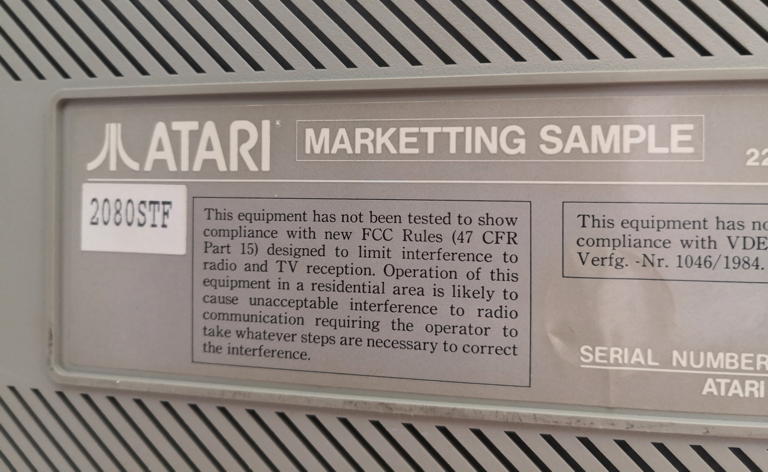
Marketting? Well… somebody’s been in a hurry or not native to English. Anyhow, the label shows the same quality as those used with Ataris produced in greater numbers. That said, there’s no serial number and the model ist just a paper-sticker.
Next unique thing is the floppy cut-out on the right side. It’s the same square one like on a Falcon, but the plastics are in the proper ST grey. Mhhhh….
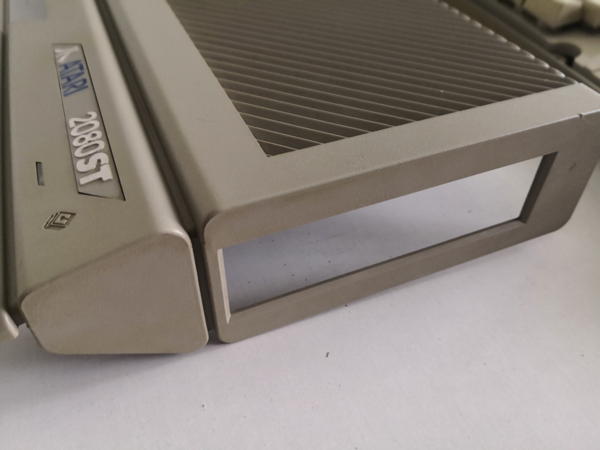
Finally the mainboard: Yes, it’s very 1040STFM without the M(odulator) part. But then it features a yet undocumented issue number of C100059, production week 8813. And mind the installed Blitter at the lower right.
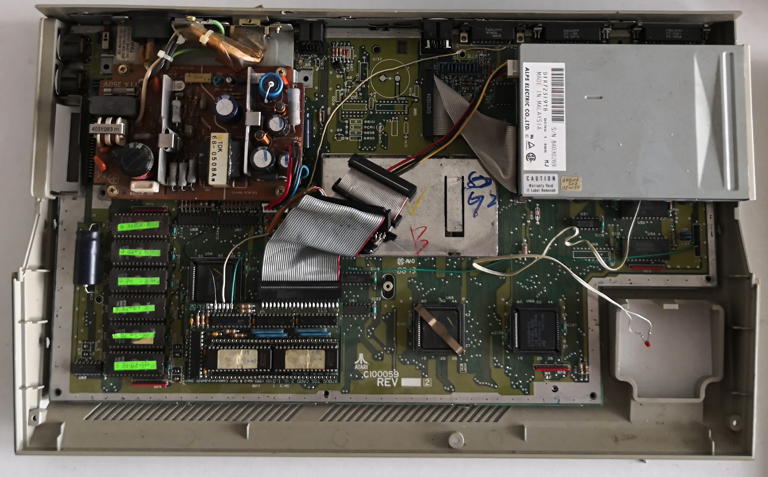
So what do we got here? Not having any matching-numbers system like in the vintage car world, we can only guess…
It might be a real “Marketing Sample” made for a planned pimp-up of the 1040 family. On the other hand it also can be a nicely composed Frankenstein system made of parts e.g. being sold at Ataris sell-out in 1995.
Given the sum of the unique parts being used, I opt for the “real marketing sample”, probably being put together using available parts and meant for checking out, if there’s a demand/market for such model(s)… and history taught us that there wasn’t.
Anyhow, I pulled out the crap which had been “installed” over the previous years…
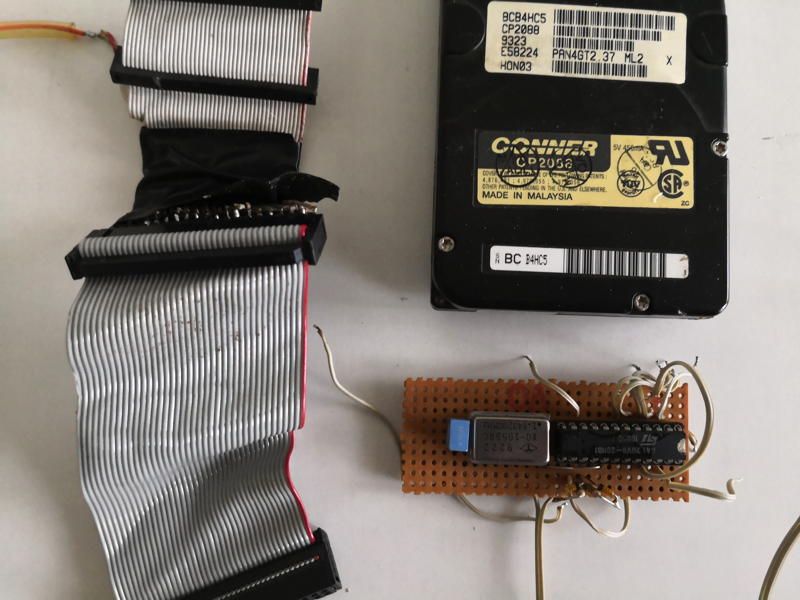
So the noisy 2.5″ 80MB harddrive got replaced by a CF-Card which nicely fits where the modulator would be, if this would be a STFM.
Additionally I 3D-printed a mounting thing for it which you can download here.
Finally, the build-in Hard & Software TOS-Card II 2.06 (that’s a long product name!) got fixed so it actually can switch between the on-board TOS and the 2.06 sitting on the card.
When everything’s done, it looks nice and tidy down there:
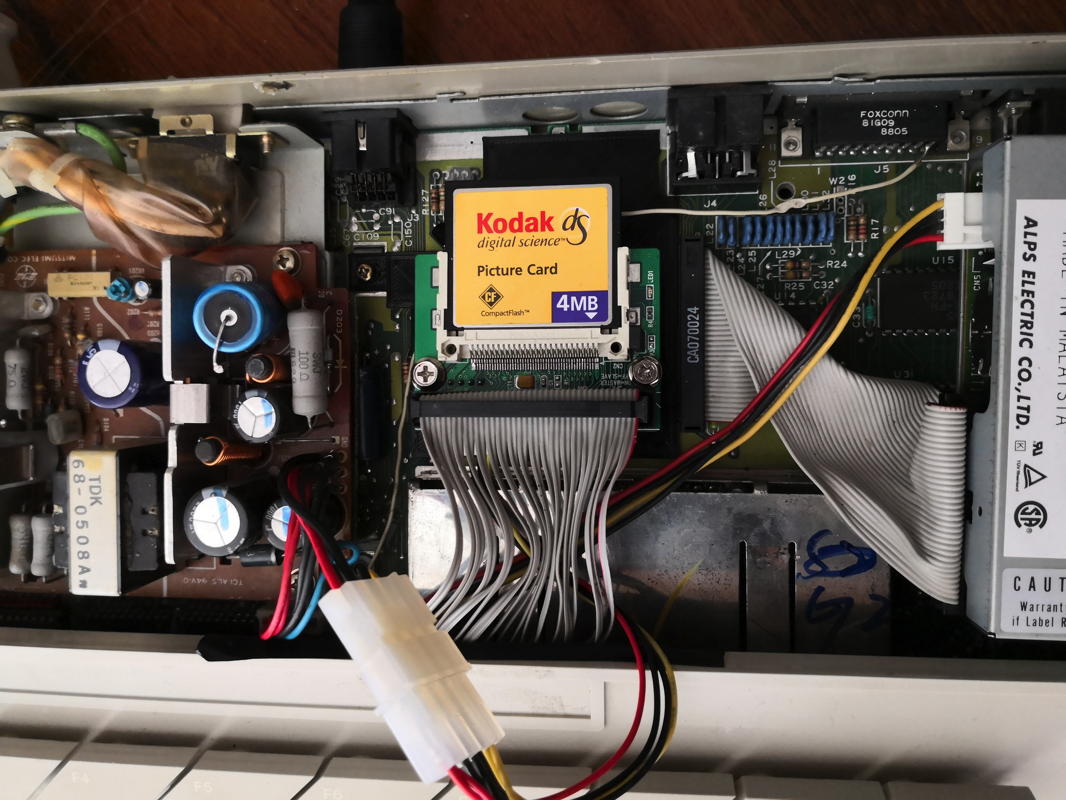
So I think I’m all set for some pure 8MHz 68000 fun… oh boy, did I love those days.

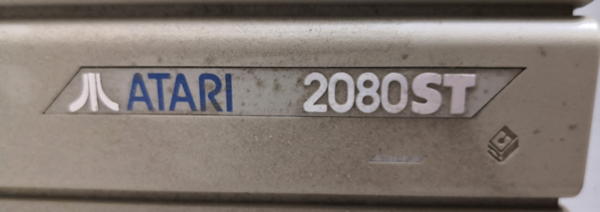
Waaaait, so it was supposed to be equipped with regular 1.44MB FDD? Or is it just coincidence and it has stanard WD1772 floppy cotroller?
I simply don’t know. Actually, you never know anything with these prototypes. Maybe they just used what was there… or there was a bigger plan. Without written prove all we can do is guessing.